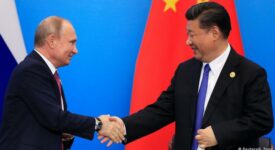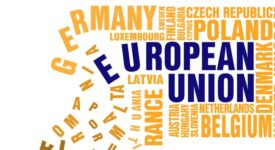Annika Linck (Collège d’Europe)
Much of the South China Sea is subject to overlapping and contradicting claims of sovereignty by China, Vietnam, the Philippines, Malaysia and Brunei. Different perspectives of these states lead to disagreements about the ownership of the islands, rocks as well as sovereignty over the surrounding seas and resources. China’s activities in the South China Sea over the past few months raise tensions with the neighboring countries. But how is the European Union affected by this issue?
The dispute concerns particularly the islands in the South China Sea and it is precisely these islands of which the above listed countries claim ownership. When China started to build its military objects on these disputed islands, it was followed by an escalation of tensions. In 2014, China actually started constructing a runaway in the disputed territory, which is designed for military purposes. This runway was completed a couple of months ago and although other smaller claimant countries also have built runways on these islands, these cannot be used for military purposes due to their size. China bases its historical and legal claim to this territory on the maps that it drew itself up in 1947. In these maps, China owned 80 percent of the South China Sea, including the coveted islands.
Even though the South China Sea is geographically very distant from Europe, EU Member States are tied to this region by a close business relationship. The South China Sea is in fact of great importance for the EU since the ASEAN region is the EU’s third largest trading partner after the US and China. Moreover, 50 percent of the world trade passes through this region and thus any conflict there could cause its interruption. Association of South East Asian Nations or ASEAN, which appears to be a natural partner of the European Union, also seeks stability in the region. ASEAN and the EU work closely together, but mostly bilaterally on the level of the Member States, which is not in accordance with the interests of the Union that traditionally prefers negotiations in a region-to-region format.
This disagreement divides both ASEAN and the EU into two groups. The first group of countries thinks that this dispute should not be solved by ASEAN since this issue does not affect this regional grouping as a whole, but only some of its Member States. By contrast, other group of countries agree that ASEAN as a whole should take action precisely because the interests of some of its members are at stake. Ultimately, it remains to be seen if this escalating situation in the South China Sea will cause a split between the members of ASEAN and the EU or will it be possible to overcome these disputes without the intervention of these two regional actors?
(The study can be downloaded here: https://www.coleurope.eu/news/eu-china-observer-issue-216)







